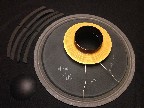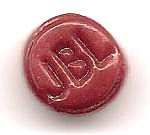I have parts on hand for a quick and dirty variant. A pair of 2344a horns with 2425j drivers, a pair of LE14H white cone woofers and a pair of NL200T3 crossovers (probably need rebuilt down the road).
The box plan I’m kicking around is sort of a trapezoid. I have a few questions:
- Any major design flaws in the box?
- Has anyone cut large triangles on a table saw?
- My plan right now is to paint these black, and am considering using the texturized rubber stuff they sell for coating pickup truck beds. Does anyone have experience with this stuff? Or, what is the “DuraFlex” finish that JBL Pro uses?






 Reply With Quote
Reply With Quote




 )
) 


